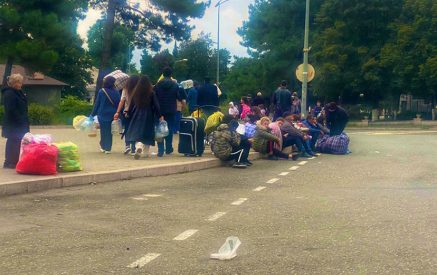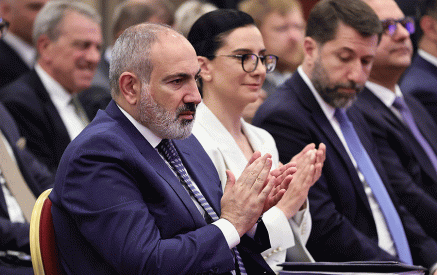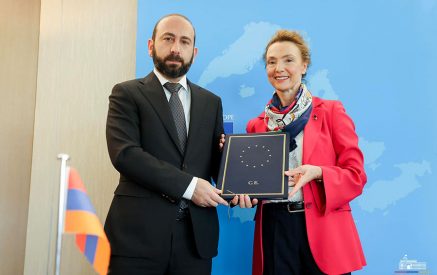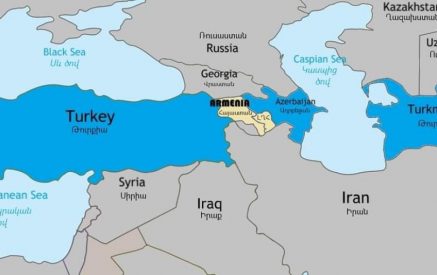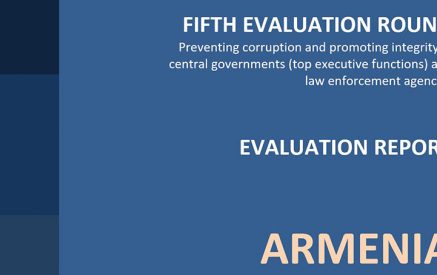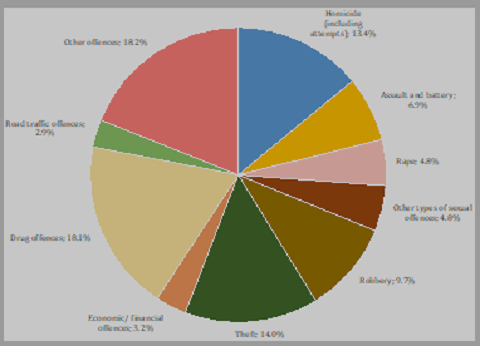Europe’s rate of imprisonment remained stable in 2019, according to Council of Europe survey
Secretary General Pejčinović Burić calls on states to resort to alternatives to deprivation of liberty and to protect both the prison population and prison staff
Strasbourg, 07.04.2020 – The overall imprisonment rate – the number of inmates per 100,000 inhabitants- remained stable in Europe from 2018 to 2019, according to the Council of Europe Annual Penal Statistics for 2019 (SPACE I), published today (see also the Key Findings).
On 31 January 2019, there were 1,540,484 inmates in the 50 prison administrations (out of 52) of the Council of Europe member states for which these data are available, which means that the overall imprisonment rate, an indicator mainly determined by the length of prison sentences, was 106 inmates per 100,000 inhabitants. In the 45 prison administrations that provided data for both 2018 and 2019 the global incarceration remained stable, with a very slight increase from 104 to 104.5 inmates per 100,000 inhabitants. The proportion of inmates not serving a final sentence also remained stable (22%).
Read also
In the context of the coronavirus disease (COVID-19) pandemic, Council of Europe Secretary General Marija Pejčinović Burić stressed the need for relevant authorities to take into account the Statement of principles issued by the Committee for the Prevention of Torture (CPT) relating to the treatment of persons deprived of their liberty. “Prison administrations and all the relevant authorities should strive to resort to alternatives to deprivation of liberty, in particular in situations of overcrowding and take all possible measures to protect both the prison population and prison staff”, said the Secretary General.
According to the information on prison density provided by the prison administrations and available from other sources, 15 of them were suffering overall overcrowding – i.e. more than 100 inmates per 100 places. In ten of them overcrowding was particularly serious: Turkey (123), Belgium (121), Italy (119), France (117), Hungary (115), Romania (113), Malta (107), Greece (107), Austria (106) and Serbia (106). It must be noted, however, that countries with a lower total number of prisoners than their overall prison capacity at national level could also suffer from overcrowding in specific prisons. Overall, in Europe there were 89.5 inmates for every 100 available places in prisons.
The countries with the highest incarceration rates were Russia (386 inmates per 100,000 inhabitants), Turkey (329), Georgia (270), Lithuania (232), Azerbaijan (218) and Czech Republic (203). Other countries with high incarceration rates were Republic of Moldova (197), Poland (190), Slovak Republic (189), Montenegro (186), Albania (185), Latvia (183) and Estonia (181). Not taking into account countries with less than 300,000 inhabitants, the lowest incarceration rates were found in the prison administrations of Iceland (40), Finland (50), Netherlands (56), Sweden (60), Norway (61), Bosnia and Herzegovina (Republika Srpska) (66), Slovenia (67), Denmark (69), Armenia (76) and Germany (77).
The prison administrations where the incarceration rate grew the most were Turkey (+13%), Cyprus (+11%), Denmark (+9%), Bulgaria (+8%), Georgia (+7%), UK (Scotland) (+7%), Greece (+6%) and Sweden (+6%). There were major reductions in the incarceration rates in Armenia (-36%) and North Macedonia(-29%), followed by Iceland (-14%), Bosnia and Herzegovina (Republika Srpska) (-11%), Romania (-10%), Republic of Moldova (-8%), Russia (-8%), Azerbaijan (-7%), Norway (-7%), Latvia (-6%) and Estonia (-5%).
The median age of the inmates held in European prisons was 35 years. Approximately 15% of inmates were 50 or more years of age, although in some countries the proportion of prisoners over 50 was particularly high: Bulgaria (35%), Italy (25%), Portugal (21%), Norway (20%), Spain (20%) and Slovenia (19%).
The prison administrations with the largest number of inmates aged 65 or over were Turkey (3,521 inmates), United Kingdom (England & Wales) (2,995), Russia (2,895), Italy (2,247), France (1,448), Poland (1,322) and Spain (State Administration) (1,263). In the 37 countries that provided data on inmates over 65 years of age, the overall percentage of the prison population of this age was 2.4%. The prison administrations with the highest proportion of inmates over 65 were North Macedonia (9.1%), Croatia (5.9%), Albania (4.6%), Italy (3.7%), United Kingdom (England and Wales) (3.6%), Lithuania (3.4%) and Slovenia (3.3%).
Women continued to represent 5% of the total prison population. Overall, the proportion of foreigners in prisons was 14%. However, in the 38 countries that provided these data for 2018 and 2019, the proportion of foreigners in prisons slightly increased from 15.9% in 2018 to 16.6% in 2019. The proportion of foreigners among inmates continued to show strong differences between countries. In Eastern European countries the proportion of foreigners continued to be very low, often under 5%, and from 2% to 72% in Central and Western European countries.
The survey shows that the length of imprisonment in Europe fell from 8.2 months in 2017 to 7.7 months in 2018, which represents a 5.4% decrease. Countries with the longest average term of imprisonment were Azerbaijan (37 months), Portugal (32), Republic of Moldova (26), Czech Republic (24), Romania (23), Spain (21), Estonia (16) and Italy (15).
From 2018 to 2019 the proportion of prisoners serving sentences for drug-related offences grew by 5.3% in Europe. Close one out of every five inmates in Europe were in prison for this type of offences (18%). However, in some prison administrations more than one quarter of all inmates had been convicted for drug-related offences: Latvia (47%), Iceland (34%), Italy (32%), Albania (32%), Azerbaijan (28%), Russia (28%), Cyprus (28%) and Estonia (27%).
With regard to other type of offences, the proportion of inmates serving prison sentences for theft decreased significantly (-17.6%), whereas there was an increase in the percentage of inmates convicted for sexual offences. In 2019, 40% of inmates in Europe had been convicted for offences involving some kind of violence. These offences included homicide (13.4%), robbery (9.7%), assault and battery (6.9%), as well as rape (4.8%) and other sexual offences (4.8%).
At the European level, there were 1.6 inmates per member of all types of prison staff and 2.6 inmates per custodial staff, these ratios varying greatly among countries. At European level, the cost of imprisonment in 2018 totalled 26 billion euros in the 43 prison administrations which provided these data.
***
The SPACE survey is conducted for the Council of Europe by the University of Lausanne. The SPACE I 2019 survey contains information from 45 out of 52 prison administrations in the 47 Council of Europe member states.
Notes
- Forty-five of the 52 prison administrations in the 47 Council of Europe member states participated in the SPACE I 2019 survey. Belgium, Bosnia and Herzegovina (State and federal levels and Republika Srpska), Georgia, Malta and Ukraine did not participate. For certain indicators concerning these administrations data were retrieved from other sources.
- Unless specified otherwise, data refer to 31 January 2019 and are expressed in median values, which are more reliable than average figures as they are less sensitive to extreme figures.
- Comparisons between 2018 and 2019 are provided only for the prison administrations that provided specific data for both surveys.
- In most indicators, the numbers and percentages have been rounded to avoid decimals.
Infographics:
Countries with the highest total number of inmates
Countries with more inmates than places available in prisons (overcrowding)
Countries with the highest prison population rates
Countries with the most inmates aged 65 or over
Council of Europe Annual Penal Statistics (SPACE reports) for 2018- January 2019 – key points
Background
- The Council of Europe Annual Penal Statistics – known as the SPACE reports – are compiled for the 47-nation Council of Europe by the University of Lausanne; this year’s reports cover the period 2018 – January 2019
- 45 of the 52 prison administrations in the Council of Europe area answered this year’s questionnaire – the prison administrations in Belgium, Bosnia & Herzegovina (State level, Federal level, and Republika Srpska), Georgia, Malta and Ukraine – did not. However, data concerning the total number of inmates in Belgium, Republika Srpska (Bosnia & Herzegovina), Georgia, Malta, and Ukraine, as well as the total capacity of prison institutions in Belgium, Republika Srpska (Bosnia & Herzegovina), Georgia and Malta were retrieved from other sources and are therefore included in the calculation of the relevant European median values.
- Data are not collected for Nagorno-Karabakh.
Key points – overall
Prison population size
- As of 31st January 2019, there were 1,540,484 inmates in the penal institutions of the 45 Council of Europe member states included into the report. [Key findings, p1]
- ARMENIA: In January 2019 total number of inmates in Armenia is 2,266 on 2,965,269 inhabitants, showing an important decrease (35.9%) in comparison to 2018 (3,536) [main report, p30]
- Across Europe as a whole, there were 106.1 inmates for every 100,000 inhabitants by January 2019 [Executive Summary, p3] – in other words, one prisoner for every 943 inhabitants.
- The highest prison population rates were registered in the Russian Federation (386.1 inmates per 100,000 inhabitants), Turkey (329.0) and Georgia (269.7), followed by Lithuania (232.1), Azerbaijan (218.2) and Czech Republic (202.6). The lowest prison population rates were observed in San Marino (2.9), Liechtenstein (31.3), Iceland (40.3), Finland (49.8), Monaco (54.8), Netherlands (56.4) and Sweden (59.7). [Key findings, p2]
- ARMENIA: In Armenia prison population rate amounts to 4 per 100,000 inhabitants and is higher than the European median of 106.1, an important decrease since 2018. [Main report, p30]. Currently, Armenia counts among countries with the lowest incarceration rates, comparable to Germany (77), Denmark (69) and Slovenia (67).
- Between 2009 and 2019, incarceration rates grew considerably in such countries as Turkey (103.7% increase), Liechtenstein (59% increase), Albania (21% increase) and Montenegro (16% increase from 2009). The largest decreases in prison population rates from 2009 to 2019 were observed in such countries as Latvia (43% decrease), Georgia (40% decrease) and Armenia (38% decrease). [Main report, p31]
- The ratio of inmates per prison staff across Europe in 2019 was 1.6 inmates per 1 member of prison staff (a European median); the same as in 2018. [Key Findings, p10].
- The countries with the highest number of inmates per total custodial staff on 31st January 2019 were Turkey (4.9), North Macedonia (2.8), Republic of Serbia (2.7), Moldova (2.5), Poland (2.5), Austria (2.4) and Greece (2.4). The lowest number of inmates per prison staff was observed in San Marino (0.1), Monaco (0.3), Andorra (0.7), Liechtenstein (0.8), Sweden (0.8), Norway (0.8) and Denmark (0.9). [Key Findings, p10]
- In Armenian prison administrations the number of inmates per total custodial staff is 1.1, which is lower than the European median of 1.6. This number has lowered since 2018 when the number of inmates per total custodial staff stood at 1.8.
Overcrowding
- The median prison density across Europe in 2019 was 89.5 inmates per 100 places available, a slight decrease as compared to 91.4 in 2018. [Key Findings, p9]
- 15 prison administrations reported overcrowding in 2019: Turkey (122.5 inmates per 100 places available), Belgium (120.6), Italy (118.9), France (116.5), Hungary (114.5), Romania (113.1), Malta (107), Greece (106.8), Austria (105.8), Republic of Serbia (105.5), Slovenia (104.3), Moldova (103.8), Denmark (103.6), UK: Scotland (103.4), Czech Republic (102.5) [Key Findings, p9]
- ARMENIA: Total capacity of penal institutions in Armenia is 5,346, resulting in prison density of 42.4, which is almost two times lower than the European median level (89.5) and among the lowest in Europe. Moreover, prison density in the country decreased from 66.1 in 2018 to 42.4 in 2019. [main report, p72]
Gender/origin / age
- The median proportion of female inmates across Europe in 2019 was 5.1%, ranging from 0% in Liechtenstein to 14.3% in Monaco [Key Findings, p4]
- The median proportion of foreign inmates was 14.4%, ranging from less than 0% in San Marino to 95.2% in Monaco [Key Findings, p5]
- The average age of inmates in Europe in 2019 was 35 years [Key Findings, p3]
- ARMENIA: number of female inmates is 72 which represents 3.2% on the total number of inmates and is lower than the European median (5.1). [main report, p43]
- ARMENIA: total number of foreign inmates (including inmates for which nationality is unknown): 118. There are 2 underage male inmates, and no minor female inmates.
Cost
- The 43 European prison administrations that provided accurate total expenditure data spent totally over €26 billion in 2018 [Key Findings, p.14]
- The median amount spent per inmate per day in 2018 was €68.3, comparable to €66.5 in 2017; this figure ranged from €2.4 per prisoner per day in Russian Federation to roughly 335 EUR in Norway and Sweden, more than 400 EUR in San Marino and €1,154.1 per prisoner per day in Luxembourg (this figure was not considered in the calculation of the median amount) [main report, p130].
- The countries with the highest total budget spent by prison administration in 2018 were Russian Federation (€3.5 billion), Germany (€3.2bn), Italy (€2.8bn), France (€2.7bn), Spain (€1.5bn in total), Turkey (€1.1bn). [main report, pp 130-131]
- ARMENIA: total budget spent by the Prison Administration in Armenia in 2018 was €15.16mn, approximately the same as compared to 2017 (€15.02mn). Average daily expense per inmate was €13.5, which is significantly lower than the European median of €68.3, and nearly identical to the 2017 indicator [main report, p. 130]
Sentences
- The biggest proportion of inmates were serving sentences for drug offences (18.1%), theft (14%), homicide (13%). [Key Findings, p7]
- The most common length of sentence (27.4%) was 1-3 years [Key Findings, p.7]
- In Europe as a whole, 1.3% were serving life imprisonment, and 2% were serving a sentence of 20 years and over. [Key Findings, p7]
- ARMENIA: the largest share of sentenced inmates (38,2%) out of total 1,337 was incarcerated for the period from 5 year to less than 10 years. [main report, p53]
- ARMENIA: the percentage of detainees not serving a final sentence in the prison population is one of the highest in Europe (41.0%), along with Luxembourg (49%), Switzerland (48%) and Netherlands (43%); the percentage across Europe being 22% of the total prison population (Key findings, p. 6)
- ARMENIA: the categories of offences in the Armenian penal code are different from the ones proposed by SPACE: crimes against property (551 inmates) and crimes against life and health (398 inmates) being the most common offences, whereas crimes against family and child interest (3 inmates) represent the smallest fracture of all offences. [main report, p57]
Mortality
- The median mortality rate in Europe was 28.3 deaths per 10,000 inmates in 2018 (up from 26.3 deaths in 2017). [main report, p 112]
- Suicide accounted for on average 23.9% of deaths in penal institutions. [main report, p109]
- ARMENIA: in 2018, 10 deaths (including 2 suicides) were registered, which remained the same as in 2017. Thus, the mortality rate per 10,000 inmates is 44.1 in 2018, much higher than the European median value, placing Armenia among countries with the highest mortality rates. Suicide rate per 10 000 inmates is 8.8 in 2018, above the European medium cluster as well. [main report, p108]
Releases and escapes
- ARMENIA: total number of releases in 2018 was 2,638 (against 1,817 in 2017). Thus, the release rate of 88.7 per 100,000 population in 2018 is much higher than the value of 2017 (61.1 per 100,000 population). [main report, p101]
- ARMENIA: In 5 cases 14 inmates (of which 4 sentenced prisoners, and 10 inmates not serving a final sentence) attempted to escape from prison, but attempts were prevented. There were no escapes from closed institutions and other types of institutions in 2018. [main report, p104]
Legislative and other measures taken during the reporting period:
- Changes in criminal law: The National Assembly adopted RA Law in 2018 “On declaring amnesty in criminal cases on the occasion of the 100th anniversary of the independence of the First Republic of Armenia”;
- New legislation concerning certain categories of prisoners: No;
- Amnesties: 575; (in 2017 – 5)
- Individual pardons: 2; (in 2017 – 10)
- Collective pardons: 0;
- Other: No.
Council of Europe




